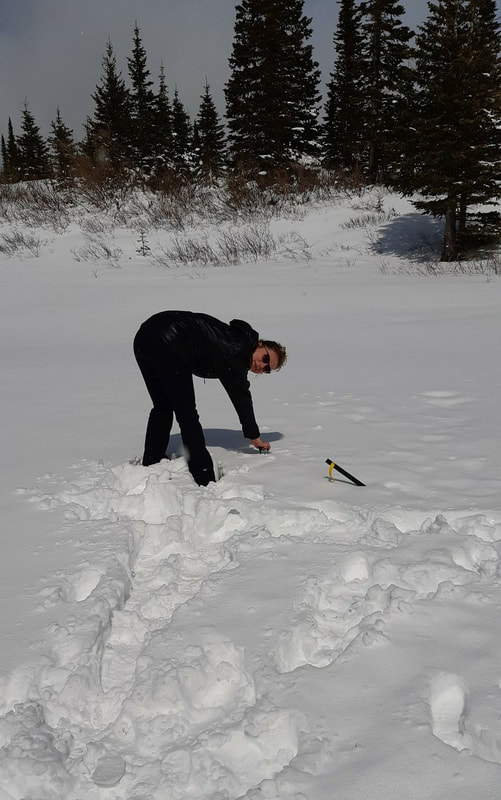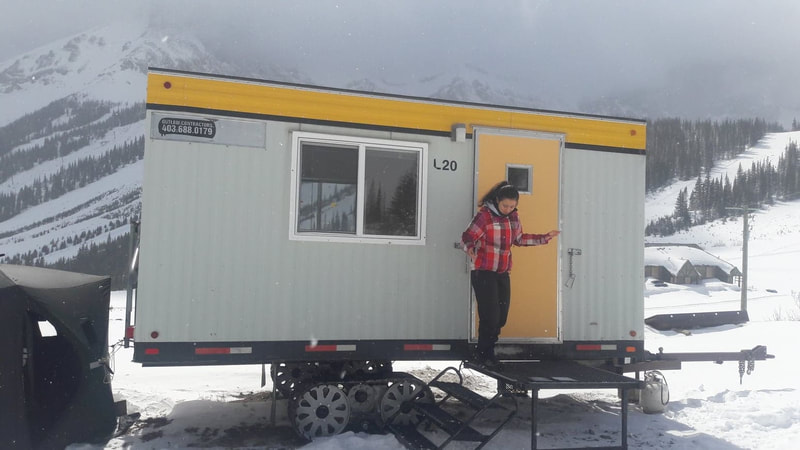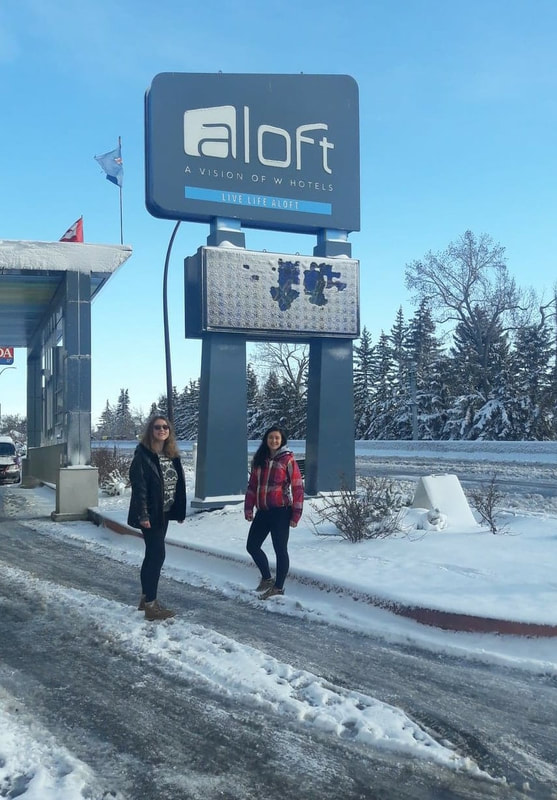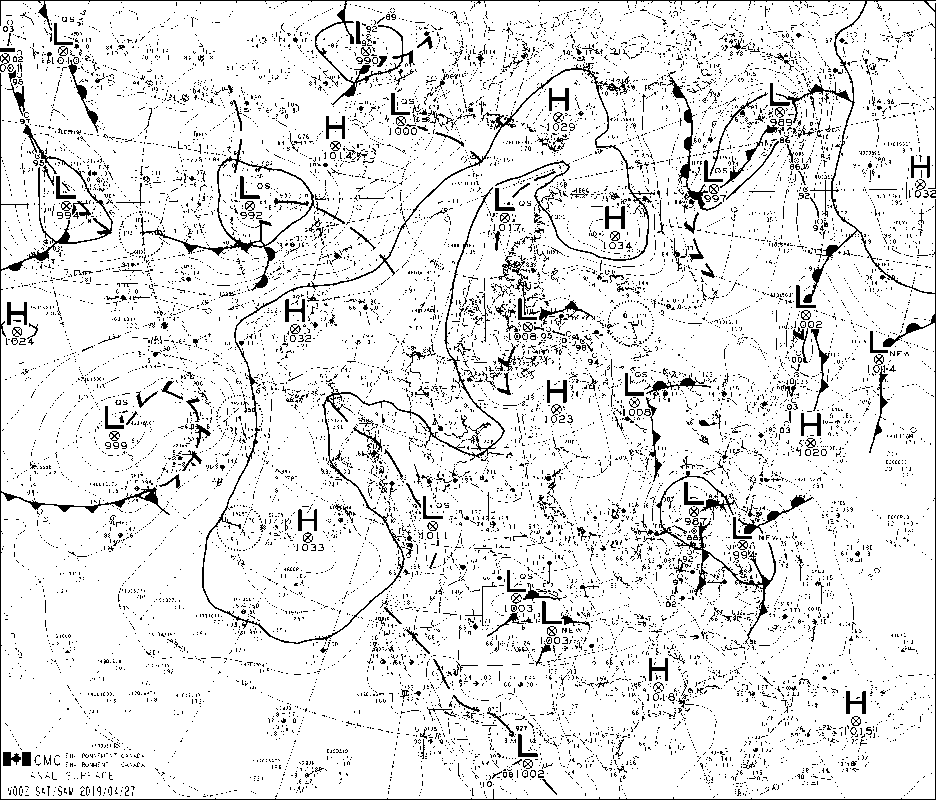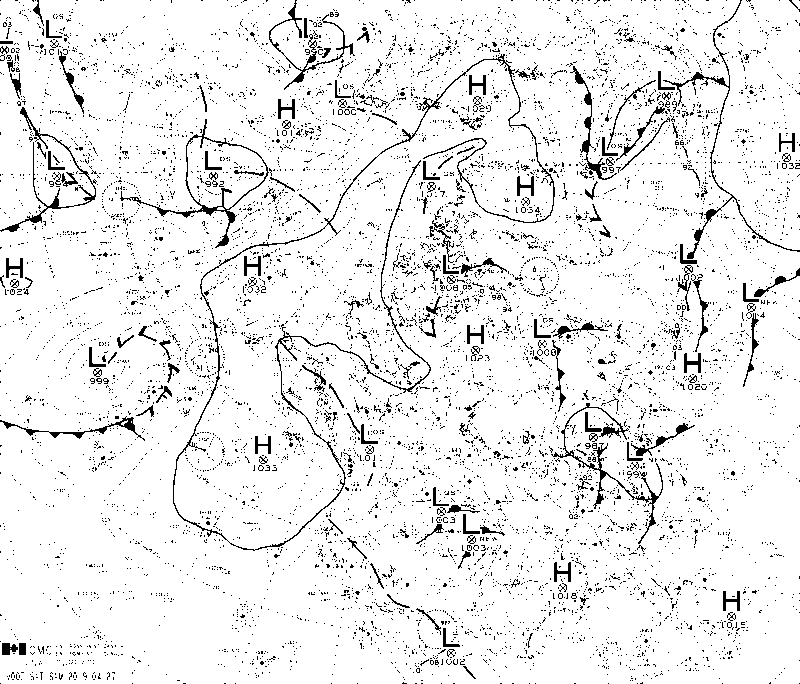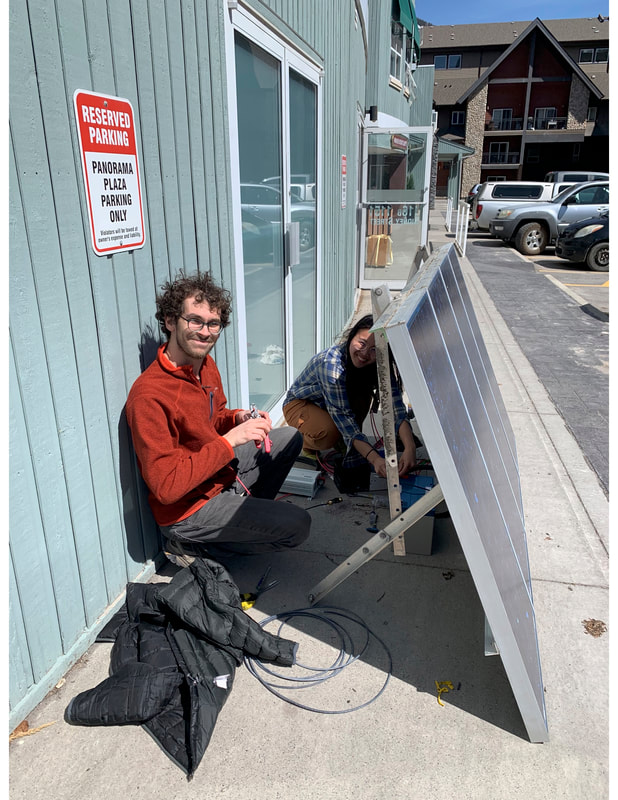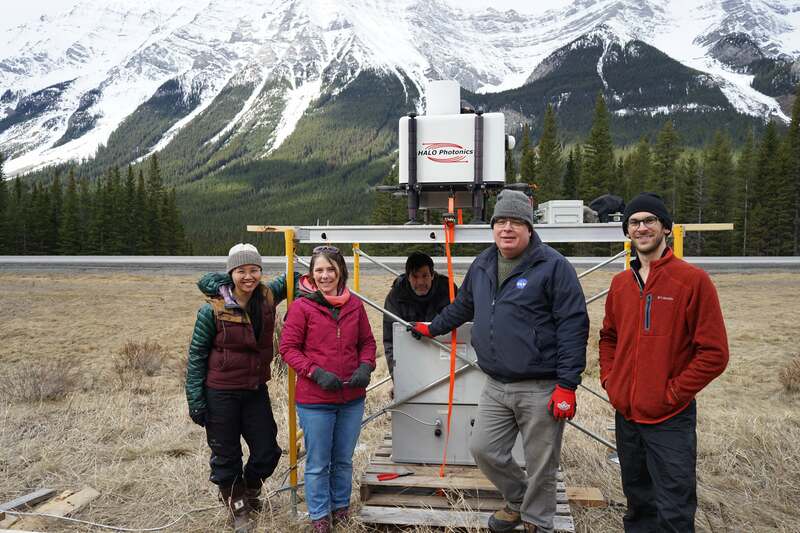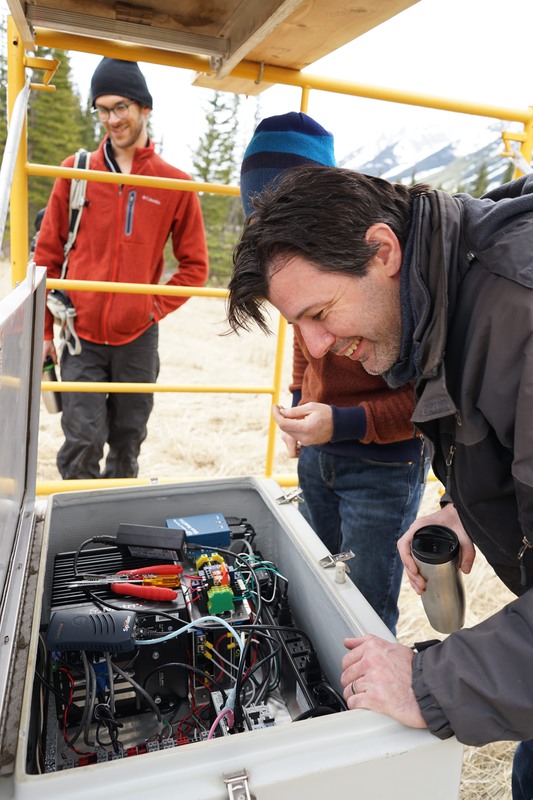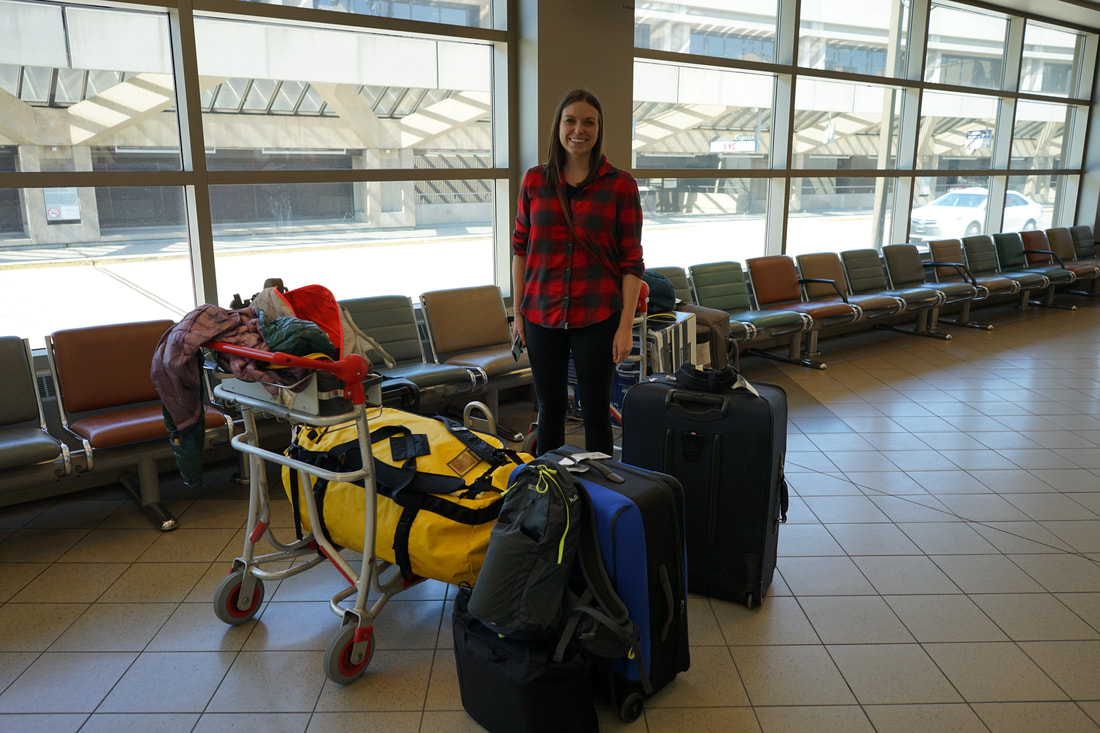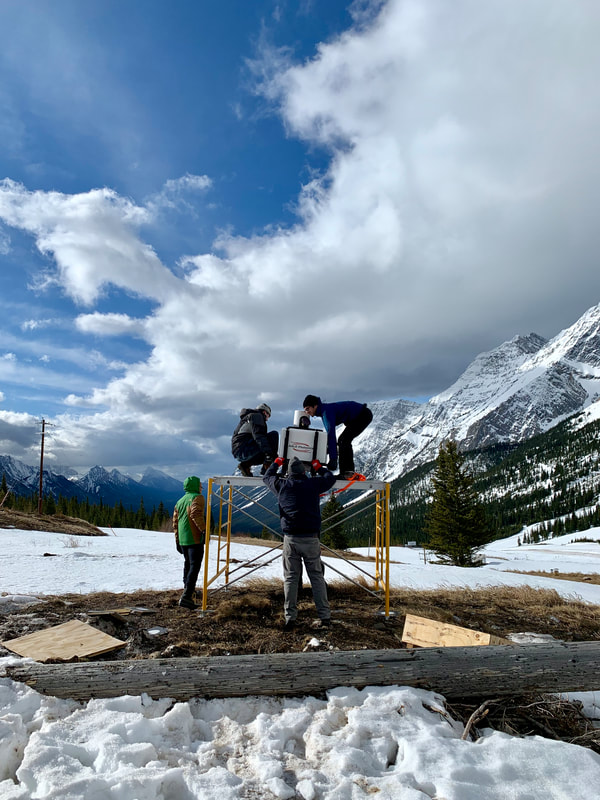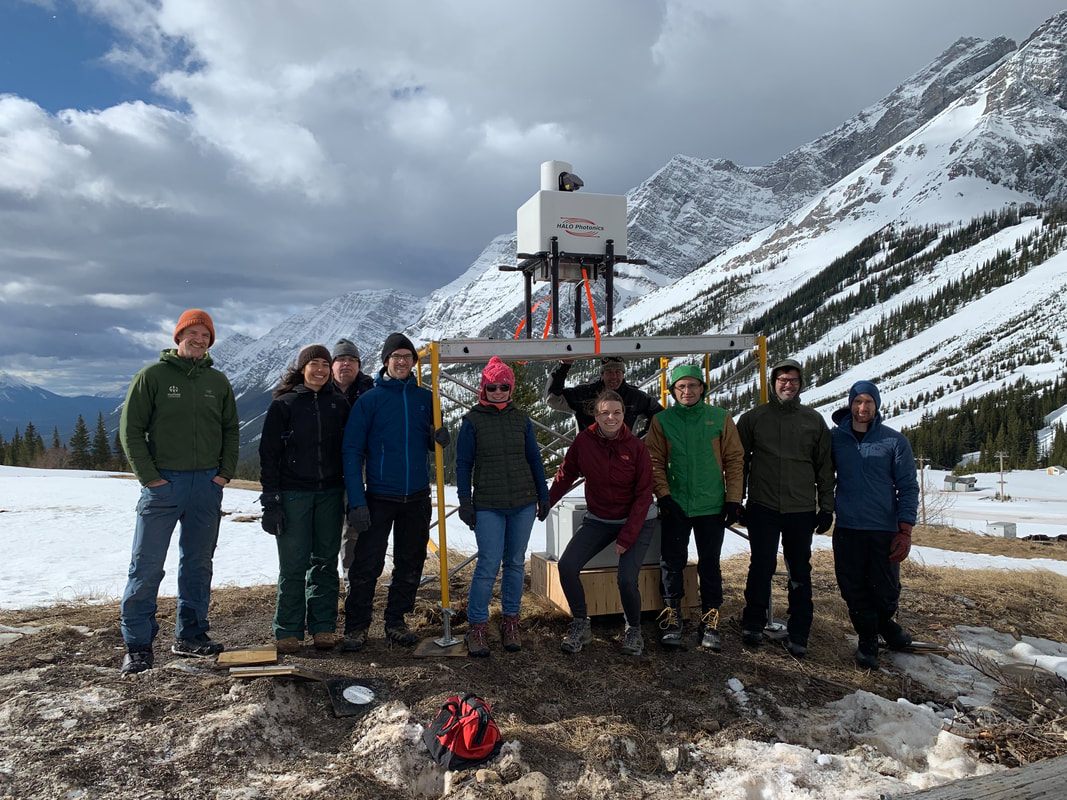Nipika Fortress
0 Comments
Monday was a training day for Cécile and Charlie from UQAM. Snow was fairly light and off and on throughout the day. It provided a good opportunity for André and I to teach Cécile and Charlie the proper way to take photos and observations without being too stressed out with the weather. Hydrometeors were mostly rimed dendrites and graupel. The sky started clearing and precipitation ended around 0100 UTC on April 30 so we were able to go home and have a relatively early night! It was a nice break after the crazy weekend.
-Hilary Field participants: Cécile Carton, Charlie Hebert-Pinard, André Bertoncini, & Hilary Smith What a busy weekend – I don’t think any of us have ever been so exhausted and excited! The upslope precipitation materialized and brought with it a lot of snow! As mentioned in a previous blog post, we rushed on Friday to get supplies, finish setting up the site, and make sure that we knew how to work all the instruments. I (Hilary) stayed up at the site on Fortress so that I was available for measurements just in case precipitation came earlier than expected. The day started out beautifully and was really warm when the sun was out. Light snow started around 0000 UTC on April 27 (6 pm MDT) and tapered off shortly afterwards. Mathieu & Juris arrived at this time, which gave me a well-deserved break. André arrived a few hours later. Snow occurred around 4 hours later than the forecast was predicting and it did not really pick up until the early evening, around 0310 UTC (9 pm MDT) and it was heavy with light winds for almost 2 hours. Particles were mostly small dendrites that were heavily rimed (pictured below). We anticipated a busy night, therefore we split into pairs with Hilary & Juris taking the 0400 UTC to 0800 UTC shift, while Mathieu & André rested underneath the tables in the trailer. During the first shift (Hilary & Juris) observed nearly 1 hour period of heavy snow which began as lightly rimed particles and as the precipitation became heavier, densely rimed aggregates were then observed. Often rimed dendrites and undistinguishable smaller rimed particles were observed. At 0600 UTC (0000 MDT) fog was present and made for very reduced visibility. Fog cleared shortly after 0900 UTC April 27 (0300 MDT) and the winds picked up significantly with strong gusts and resulted in blowing snow. Once the sun rose, Mathieu & Andre left Fortress to have a quick rest at BGI, while Juris & I stayed to make observations. During that time it was cloudy, with minimal snow, light winds, and fairly good visibility. Mathieu & André returned to Fortress to let Juris & I go to BGI to have a bit of a rest. Snow began to fall around 2000 UTC (1400 MDT) at Fortress and became heavy quickly. Juris & Hilary left BGI around 2330 UTC (1730 MDT) when the snow became heavy to head back to Fortress. The highway to Fortress was pretty snow covered with poor visibility in some sections. We took over observations from Mathieu and Andre when we got back to Fortress. Snow was still very heavy. Over the course of the evening/night, we saw some very interesting particles such as capped columns, bullet rosettes, stellars, hollow columns, and various types of dendrites. The snow ended around 1100 UTC on April 28 (0500 MDT) while Mathieu & André were sleeping. Juris & I went to hang out in the lounge. Snow depth was approximately 30 cm by the end of the storm. This meant that we were snowed in at the top! We backed up some data and hung around the lounge for a few hours before some trucks drove the road to the top and made a path for us to drive down. We took snow measurements every 100 m change in elevation on the way down and noticed a significant change in snow depth – from 30 cm at around 2100 m to 5 cm at 1600 m. We returned safely to BGI for some much needed rest. All in all, it was a very exciting (and exhausting) weekend. A very big start to the project! -Hilary Field participants: André Bertoncini, Mathieu Lachapelle, Juris Almonte, & Hilary Smith We arrived in Calgary two days ago, and took some more time to get at the site location because of the impressive storm. We stopped at a nice hotel Saturday night to make sure we would not end up on side of the road like the 60 vehicles we saw on our way to Kananaskis Sunday! We got everything ready yesterday to finally start the real work (actually I should have said training...) this morning. However, we are lucky to start slower than our team mates, with some intermittent snowfall under a beautiful sun! Thanks to Hilary and Andre for teaching us Cecile and Charlie
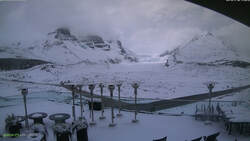 Here are some useful webcam feeds for those travelling on the Icefield Parkway. The beautiful Columbia Icefields are wrapped in snow today. https://www.webcams.travel/webcam/fullscreen/1463249191 Earlier this week, a special weather advisory for a snowstorm over Friday and Saturday was issued. A classic Gulf of Alaska low tracking eastward across the Rockies. This synoptic pattern is known to produce upslope precipitation — lots of precipitation!
News of this forecasted storm, kept all of us on our toes as we scrambled to get everything prepared for the end of the week, before the official date of our field campaign. As we know well, storms don't care about trivial dates and will happen - field campaign or not. Our team quickly buckled down and prepared for an expected busy weekend, making sure that everything was ready for Fortress Mountain. This meant Michael Harwood and Robert Reed from ECCC were hard at work installing the instrumentation at Fortress Junction Service and Fortress Mountain, making sure the instruments were up and running for Friday. Michael and Robert did a wonderful job, transferring knowledge about the ECCC equipment that they are well accustomed to. However, there are a few remaining issues. Currently, the upper and lower Fortress sites do not communicate on the same network as there was no line of sight from both sites. This means that we are unable to access the products from the lower site while at Fortress Mountain (FJS). Although there are a few bugs, we are sure that these issues can be fixed remotely by Peter Rodriguez (ECCC) and the rest of the hardworking team. On Thursday Mathieu and myself worked on the solar panel system for Nipika Mountain Resort, making sure that the solar panels that were generously borrowed from Nipika Mountain Resort worked with our planned system. We were unable to get an actual power draw reading from the laptop without a kill-a-watt electricity monitor. This device has since been purchased, and our plan is to calculate the draw when we get the chance. Meanwhile, Hilary setup the snow macrophotography system and worked with Professor Theriault to work on the snow macrophotography protocols, and conducted a practice carsonde. One matter we kept debating was what the camera setup would look like. We’ve decided to try a fishing tent to take photos in. Hopefully it doesn’t blow away on us like in 2015! Don’t worry, this time it’s staked down! Friday morning the models were forecasting precipitation in Kananaskis country around 1500 MDT (2100 UTC). The team gathered at 8AM whereby everyone was briefed with the expected storm and made a plan for the day. The whole team drove out to the top of Fortress Mountain whereby Robert Reed (ECCC) gave us a a tutorial on the ECCC website designed specifically for the SPADE project and the instruments used. Afterwards, the USask. team (Greg Galloway, Robin Heavens, Andre Bertoncini) plus myself uninstalled the parsivel at Fortress, which was then brought to Barrier Lake and deployed beside the MRR Pro. This same parsivel will be sent over to Nipika after the storm. Thanks to Greg and Robin for getting it setup before the storm, while the rest of us ran some errands in Canmore! Mathieu Lachapelle connected the parsivel to the computer and hooked it up to a power source which converted AC power to 24V DC and made sure that everything was running properly and we left for Fortress. Snow was starting upon our arrival, but still too warm to take snowflake macrophotography. We are now waiting at the trailer itching for some precipitation - snow is coming. Stay tuned! -Juris Almonte Field participants at Fortress Mountain: Hilary Smith, Mathieu Lachapelle, André Bertoncini & Juris Almonte The SPADE set-up group arrived yesterday, and we hit the ground running! Julie, Juris, Mathieu, and I (Hilary) met up in the Calgary airport to go and pick up a few items before heading off to Canmore. We got a bit turned around on our way to the store, but we made it there in the end and got everything we needed. This made for a long time in the car, however it was completely forgotten when we got that first proper view of the mountains! We arrived in Canmore where we met up with everyone at the Coldwater Lab and made plans for the next day. After dinner and groceries in town, we left for the Biogeoscience Institute in Kananaskis Country to get settled into our accommodations and get some (much needed) rest. Set-up for the project began this morning with the installation of the LIDAR at Fortress Mountain with Rob and Mike from ECCC. This was followed up with the install of the weather station and parsivel on scaffolding nearby the Powerline station. Thanks to the folks from the Coldwater Lab for their help with the install and their hard work with the pre-install setup! Weather at the top was pretty gusty with some occasional rain, but when the sun came out it was very pleasant. Juris and Mathieu headed into Calgary to pick up supplies for our solar panel system for Nipika Mountain Resort. The weather forecast for the rest of the week looks like it will be very interesting! Lots of work to keep us busy. Stay tuned…
- Hilary Smith Stay up-to-date with our goings-on via our Instagram (@gwf_spade) and Twitter (@gwf-spade). University of Saskatchewan's (USask) technicians Greg Galloway and Robin Heavens have completed the install of the wifi access point, ahead of the SPADE field campaign. This upgrade was taken on to ensure a strong wifi connection and direct line of sight towards the future LiDAR location. Once the ECCC instrumentation is installed, this will allow ECCC technicians to observe the instrumentation data remotely from Toronto during the May-June campaign. Moreover, with the installation of cameras, ECCC technicians will be able to see the condition of the instruments and the current weather conditions. The USask team has also installed the recently repaired optical disdrometer at Fortress Powerline on March 25, 2019. This is the same one used in the 2015 Kananaskis field campaign project and will start collecting some baseline data. Moreover, we will be checking to make sure that it is functioning properly before it is sent out to Nipika Mountain Resort late April. Thanks Greg and Robin for the successful installation! - Juris Almonte Professor Stephen Dery along with a couple members of the UNBC Northern Hydrometeorology Group Dr. Siraj Islam and Aseem Sharma went for a site visit to Nipika Mountain Resort after the Mountain Water Futures conference on March 4th, 2019 before making their way back to Prince George, BC. As we do not have remote connection to Nipika it was interesting to see the data. We've been following the precipitation amounts at Kootenay NP West Gate as a proxy for amounts at Nipika, being the nearest precipitation station. Since Jeremy Morris' last visit to Nipika (October 27th, 2018), Kootenay NP West Gate recorded 71 mm of precipitation. As it turns out, Nipika, ~20 km to the East and ~150 m higher in elevation received 135 mm over the same duration, almost double the amount of precipitation! Goes to show how variable precipitation can be over complex terrain. 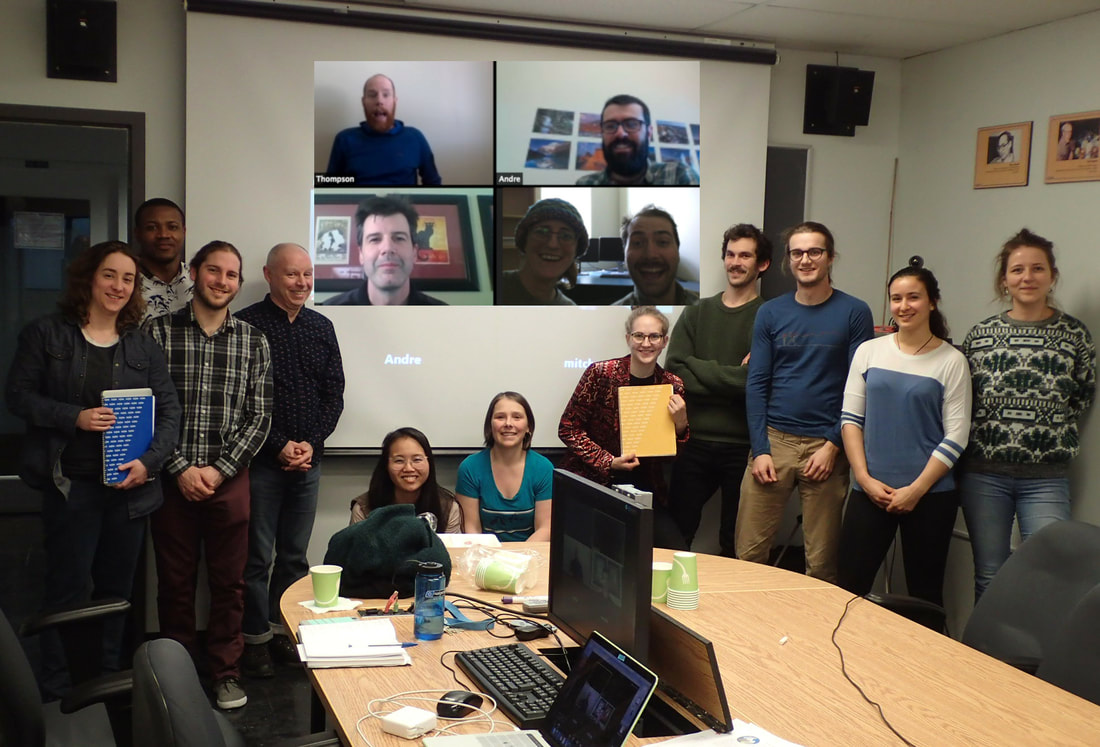 Joining remotely (Hadleigh Thompson (UNBC), Andre Bertoncini (USask), Robert Reed (ECCC), Selina Mitchell (UNBC), Jeremy Morris (UNBC). From left to right: Melissa Colette, Obert, Sebastian Marinier, Juris Almonte, Julie Theriault, Aurelie Desroches, Mathieu Lachapelle, Julien, Charlie Hebert-Pinard, Cecile Carton. **not shown: Stephanie Merrill (USask) Joining remotely (Hadleigh Thompson (UNBC), Andre Bertoncini (USask), Robert Reed (ECCC), Selina Mitchell (UNBC), Jeremy Morris (UNBC). From left to right: Melissa Colette, Obert, Sebastian Marinier, Juris Almonte, Julie Theriault, Aurelie Desroches, Mathieu Lachapelle, Julien, Charlie Hebert-Pinard, Cecile Carton. **not shown: Stephanie Merrill (USask) After a successful webinar with SPADE members and collaborators, it is now time to reflect and blog! Here is an overview of our webinar. Our SPADE team organized a 3.5 hour webinar broken up into several sections. We kicked off our webinar with a workshop on infographics by Stephanie Merrill from the GWF Knowledge Mobilization group at University of Saskatchewan. This workshop was focused on our project and how to better present our scientific work to our audience. In a society that is bombarded with rapid information, getting your research out quickly and effectively is key. Thanks to Stephanie's suggestions we are now equipped to create more meaningful posters with the right tools and resources! We then moved into more SPADE specific topics with an introduction to the project by Professor Julie Theriault, welcoming all the team and sharing the science questions SPADE are focused on. Andre Bertoncini from USask presented slides on the many hydrometeorological stations located at Fortress Mountain area and the research being conducted. Of interest to many was the recent use of SnoDrones equipped with LiDARs, an unprecedented way to conduct snow surveys. Robert Reed from Environment and Climate Change Canada gave us an overview of the equipment that he has prepped at King City, ON before heading out to Fortress for April. Robert also shared some safety precautions when using the equipment. Rest assured, we we will not be hovering over the MRR while it is running! This talk was followed by short 5 minute talks given by the HQP. It was a great chance for everyone to introduce themselves to the rest of the SPADE team and to hear about all the research progress and everyone's interest in the project! All the data from the field project are to be heavily utilized by the students and are an integral part to their research. Field participants whose research are not directly involved with SPADE had a chance to share their own research and their contributions to the project. For example, Jeremy Morris ran us through the Nipika area and the weather station that was installed Fall of 2018, which he was in charge of. The rest of our time was spent going over the safety and logistical aspects of the SPADE project, presented by Juris Almonte. This included dispelling some of the myths associated to wildlife safety. As some of the members have not been to the Canadian Rockies in the past it was important to dispel some wildlife myths! Overall the webinar was quite successful, especially for all the participants to meet each other. We even finished on time! Thank you to Professor Julie Theriault at UQAM for hosting Professor Stephen Dery and Juris Almonte for the week to discuss important SPADE matters. All in all it was a very productive week! - Juris Almonte SPADE project manager Please check out the following link for the webinar PDF slides:
https://drive.google.com/open?id=1wYqV048pVrtza3cvgDsgsKN8dyvF-eai |

